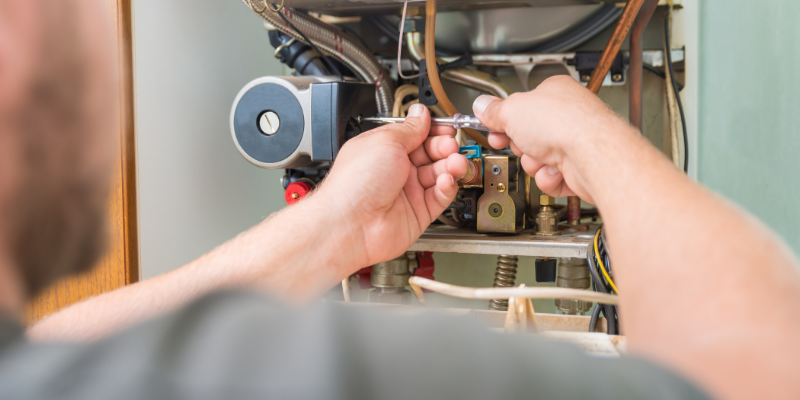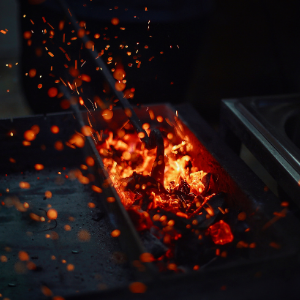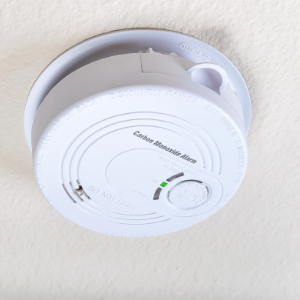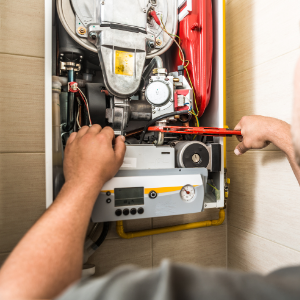
Understanding Different Types of Mobile Home Furnaces and Their Benefits
There are several varieties of mobile home furnaces, each with its own set of perks tailored to the homeowner’s individual demands. The most prevalent furnaces are natural gas, electric, and oil.
Natural gas furnaces are popular because they are efficient and cost-effective, providing continuous heat and low utility bills. Electric furnaces are popular for their safety and ease of installation, making them an excellent choice for mobile homes without gas hookups.
They provide dependable heating with low maintenance requirements. Though less popular, oil furnaces are prized for their powerful heating qualities in colder locations where keeping warm is critical.
Understanding the various types enables homeowners to choose a furnace that meets their energy needs and budgetary limits while providing optimal heating performance throughout the winter. Each kind has its own maintenance routines and repair requirements, critical for extending the furnace’s lifespan and increasing efficiency.
And if you’re considering upgrading your heating system before moving, now might be the perfect time to explore your selling options. Whether you’re planning to sell your mobile home for cash in Texas or searching for trusted buyers ready to buy mobile homes for cash in Colorado, companies like Mobile Home Cash Offer can streamline the entire process with no hidden fees or delays.
Comparing Fuel Options: Selecting the Proper Energy Source for Your Mobile Home Furnace
When choosing fuel for your mobile home furnace, consider energy efficiency, cost-effectiveness, and availability. Natural gas is a popular alternative because of its high efficiency and low cost. It delivers constant heating at a lower price than other fuels.

Propane provides a versatile alternative, particularly when natural gas is unavailable; it burns cleanly and may be kept on-site in tanks. Electric furnaces, while generally more expensive to operate, offer a reduced initial installation cost and minimum maintenance requirements.
Oil furnaces can produce a lot of heat, but they require more maintenance and have changing fuel prices. When evaluating these options, consider local utility rates, environmental effects, and your mobile home’s heating demands to ensure optimal performance from your furnace system while keeping long-term running costs under control.
Key Indicators of a Malfunctioning Mobile Home Furnace
Recognizing the warning signs of a malfunctioning mobile home furnace is critical for ensuring optimal heating and energy efficiency. One of the most common warning indications is insufficient heat output, which occurs when the stove fails to adequately heat your room, resulting in unequal temperatures across your home.
Strange noises like banging, rattling, or screeching may indicate mechanical faults or loose components in the system. An increase in energy bills without a matching increase in usage may indicate that your furnace is working harder than needed, owing to internal issues.
Frequent cycling on and off, also known as brief cycling, can indicate underlying problems such as thermostat faults or airflow restriction. Also, note any strange aromas coming from the device, which could indicate a gas leak or overheating elements.
Also, yellow flames in a gas furnace may indicate combustion inefficiencies or carbon monoxide dangers. Paying attention to these indicators can help you detect potential problems early on and extend the life of your mobile home furnace by guaranteeing prompt repairs and maintenance.
Key Steps for Troubleshooting Mobile Home Furnace Issues
A systematic approach is essential to maintain effective heating when troubleshooting mobile home furnace issues. Start by checking the thermostat settings; improper configurations frequently cause heating issues in mobile homes.
Ensure the thermostat is set to heat and the temperature is higher than the room temperature. Next, check the furnace filter; a filthy or clogged filter can restrict airflow and lower efficiency. Regularly replacing or cleaning the filter can avoid many frequent faults. Check circuit breakers and external power switches to confirm electricity is delivered to the furnace.
If your furnace runs on natural gas or propane, inspect the gas supply line for leaks or blockages, as these issues can significantly influence performance and safety. Listening for strange noises from the blower motor or other components can also provide insight into probable mechanical issues.
By systematically addressing these areas, you can discover and resolve many common issues with mobile home furnaces, ensuring a warm and comfortable environment during the winter months.
Common Issues with Mobile Home Furnaces and How to Address Them
Mobile home furnaces frequently experience several fundamental challenges that can prevent optimal heating. One common problem is ignition failure, which is usually caused by a malfunctioning igniter or thermocouple.
Keeping these components clean and properly aligned can typically cure the problem. Another common worry is insufficient airflow produced by clogged filters or ducts, which may be addressed by replacing filters regularly and cleaning any blockages in the ventilation system.
Thermostat breakdowns also present substantial issues, resulting in inconsistent temperature regulation; recalibrating or replacing the thermostat can help. Furthermore, blower motor failures, which are frequently caused by wear and tear or electrical faults, necessitate assessing wiring connections and replacing worn-out components.
Some mobile home furnaces have cycle issues, such as the furnace turning on and off too frequently. This is often due to a blocked air filter or incorrect thermostat settings. Regular maintenance checks are critical for detecting these issues early on, ensuring efficient repair operations, and preserving maximum heating performance in mobile homes.
DIY Solutions for Minor Repairs on Your Mobile Home Furnace
When minor repairs are needed to your mobile home furnace, several DIY methods can help you retain adequate warmth. First, air filters should be checked and replaced regularly since clogged filters can restrict airflow and diminish efficiency.
Inspect the thermostat to ensure it is working properly; often, a simple battery replacement or calibration is all that is required. Look for noticeable wear or damage on the furnace belts and ducts, as these components might impact performance if they are not in excellent shape.
Tighten any slack electrical connections to avoid problems caused by poor contact. Additionally, clean the blower assembly and fan blades to remove any dust accumulation that could restrict functioning. If you detect any strange noises or vibrations, inspect the motor mounts and screws for potential tightening or replacement requirements. Lubricate moving parts such as bearings and fans with the right oil to reduce friction-related difficulties.
Remove any obstacles surrounding vents to allow unrestricted air flow throughout your mobile home. By swiftly correcting these minor concerns, you may extend the life of your furnace and ensure consistent heating performance during the colder months.
Expert Tips for Efficient Mobile Home Furnace Repair
Repairing and maintaining mobile home furnaces is critical for achieving peak heating efficiency during winter. Expert advice for effective mobile home furnace repairs emphasizes frequent inspection and maintenance to avoid typical problems such as clogged filters, broken thermostats, and malfunctioning pilot lights.
Regularly cleaning or replacing air filters can increase airflow and furnace performance. To maintain consistent indoor temperatures, check the thermostat settings and ensure they are accurately calibrated.
Inspecting the blower motor for signs of wear or damage might help you avoid unexpected malfunctions that disrupt heating. Examining ducting for leaks or obstructions improves heat distribution throughout your mobile home.
Regularly inspecting gas connections and exhaust vents promotes safety while improving fuel efficiency. Minor repairs can extend the life of your furnace, lower energy expenses, and give consistent warmth during the winter months.
Engaging a licensed HVAC expert for regular maintenance ensures thorough examinations and competent advice on more difficult repair requirements.
Professional vs. DIY: When to Call an Expert for Your Mobile Home Furnace Repair Needs
Whether to repair your mobile home furnace yourself or hire a professional can greatly impact its efficiency and lifespan. A do-it-yourself technique may be suitable for small concerns such as replacing air filters, monitoring thermostat settings, or cleaning blocked vents.
However, more sophisticated issues, such as malfunctioning ignition systems, gas leaks, or strange noises, may necessitate the assistance of a qualified technician. Professionals have the necessary tools and experience to precisely diagnose and repair complex components of mobile home furnaces, assuring safe and efficient functioning.
Attempting substantial repairs on your own increases the chance of further damage and may represent a safety concern. Furthermore, frequent expert maintenance can help detect problems early on, avoiding costly failures during high heating seasons.
Understanding when to use expert services versus handling simple tasks allows you to keep maximum heating performance in your mobile home while avoiding additional problems.
Addressing Safety Concerns When Working on Mobile Home Furnaces

Addressing safety considerations is critical while working on mobile home furnaces to ensure personal safety and the proper performance of the heating system. Turning off the power supply before beginning maintenance or repair work is critical to avoiding electrical dangers.
Always check for gas leaks around connections with a soapy water solution, as unnoticed leaks can lead to severe circumstances. Proper ventilation is essential when operating in tight places, such as mobile homes, because it prevents the accumulation of dangerous fumes and gases such as carbon monoxide.
Wearing protective gear, such as gloves and goggles, can help prevent burns and other injuries during repairs. Familiarizing yourself with the furnace’s manual can provide important information about specific safety features and components of mobile home models.
Smoke detectors and carbon monoxide alarms should be installed around the furnace area to further protect against potential threats. Regular inspections by a professional can help discover problems before they become dangerous, ensuring that your mobile home’s heating system runs safely for the duration of its life.
How to Identify and Resolve Airflow Issues with a Mobile Home Heating Unit
Identifying and correcting airflow issues in a mobile home heating unit is critical to achieving peak performance and energy efficiency. The first step in identifying airflow problems is to inspect the furnace filter, since a clogged or dirty filter can severely restrict air flow, resulting in uneven heating and increased energy usage.
The filter should be replaced or cleaned regularly, as recommended by the manufacturer. Next, check the ductwork for obstructions, leaks, or damage that could prevent airflow throughout the mobile home.
Sealing leaks with proper duct tape or mastic sealant will help maintain even air distribution. Additionally, ensure that all supply and return vents are unrestrained and unhindered by furniture or other items to circulate warm air properly.
In other circumstances, airflow issues may be caused by a faulty blower motor; listening for strange noises or examining for signs of wear can help determine whether maintenance or replacement is required. Regular maintenance of these components improves your mobile home furnace’s performance and lifespan, while keeping your living space comfortably heated throughout the colder months.
Step-by-Step Guide for Replacing a Mobile Home Furnace Thermostat
Replacing a mobile home furnace thermostat is critical for ensuring maximum heating performance. First, ensure the power to the furnace is switched off to avoid electrical dangers.
Carefully remove the old thermostat from its mounting plate and separate the wires, noting their original configuration for simple reattachment. Label these wires with the matching terminals on the new thermostat, which are commonly designated as R for power, W for heat, and G for fan.
Install the new thermostat by attaching it to the wall or mounting plate and connecting each wire to the terminal. Before reconnecting power, double-check all connections to confirm they are correctly installed.
Once electricity is restored, program your new thermostat with your preferred temperature settings and test its performance by turning on the heating system. This technique improves heating performance and adds to the energy efficiency of your mobile home.
Ensuring Proper Ventilation During and After Repairs on a Mobile Home Heater System
Proper ventilation during and after repairs to a mobile home heater system is critical for sustaining indoor air quality and safety. Mobile home furnaces, like any other heating system, can emit dangerous gases such as carbon monoxide if not properly vented.
When repairing or maintaining these systems, ensure that all vents are clear of obstacles and that the exhaust paths work properly. This includes checking flues, ducting, and adjacent areas for evidence of obstructions or leaks.
Proper ventilation dissipates excess heat and prevents harmful gases from accumulating within the mobile home. After repairs are completed, all ventilation components must be tested to verify that they work properly.
Regular maintenance should include cleaning filters and ensuring intake vents have enough airflow. By prioritizing adequate ventilation throughout the repair process, homeowners can guarantee that their mobile home furnace runs safely and efficiently, offering ideal warmth without sacrificing air quality.
Comprehensive Mobile Home Furnace Repair and Maintenance Guide
A comprehensive approach to repairing and maintaining mobile home furnaces is required for maximum heating performance and lifetime. Regular maintenance procedures, such as cleaning or replacing air filters and examining the blower motor, are critical for ensuring proper operation.
If necessary, examine and calibrate the thermostat settings, as they can considerably impact furnace efficiency. Inspecting the ductwork for leaks and ensuring appropriate sealing reduces heat loss and improves overall system performance.
Checking gas connections for leakage and inspecting the pilot light or electronic ignition system assures safe functioning. Lubricating moving elements such as blower bearings reduces friction and wear, increasing system reliability.
Early detection of common issues, such as unusual noises or uneven heating patterns, can help avoid more significant problems later. By adhering to these repair and maintenance measures, mobile households can enjoy consistent warmth while extending the life of their furnace. And if you’re planning a move, combining these upkeep practices with affordable strategies for relocating your mobile home can ensure both comfort and cost-efficiency throughout the process.
The Ultimate Checklist for Maintaining Your Mobile Home Furnace Year-round
Keeping your mobile home furnace in top shape year-round helps heat your home comfortably and stretches its lifespan. Start with the air filters: swap them out every one to three months so air can flow freely and dirt stays out of the furnace. A clean filter means better efficiency and cozier rooms. Swing by the thermostat every so often to ensure it responds like it should; keeping the temperature steady means saving on energy bills, too.

Once or twice a year, give the furnace a little extra attention. Dust the blower assembly, the wheel, and the motor to keep airflow strong. While you’re at it, look at the burner flames; they should burn steady and blue. A flickering or yellow flame can hint at a combustion issue that needs a pro’s eye. Lightly grease any moving parts to reduce wear and keep everything running smoothly.
Don’t ignore the flue pipe—check for rust, holes, or anything blocking it. That pipe needs to route impurities out of the home safely. Test the carbon monoxide detectors, too; they’re a simple but essential backup in case the furnace develops a leak. Finally, scan the electrical connections. If you spot a frayed wire or any signs that the insulation is aging, replacing it is safer and cheaper before it sparks a bigger problem.
Yearly professional inspections guarantee that every part of your mobile home furnace performs correctly and that minor issues can be fixed before they escalate. By consistently following these steps, you can keep your furnace running smoothly and extend its life from winter to winter.
What Is the Most Common Furnace Problem?
In mobile homes, the thermostat tops the list of furnace headaches. When it’s off-kilter or flat-out dead, the whole heating dance stutters. You might end up cozy in one room and chilly in the next, a telltale sign the thermostat isn’t sharing the right signals with the furnace. Sometimes it’s wobbly wiring, a dead battery, or an aging model dragging the system down.
To keep the heat evenly flowing, it’s wise to check the thermostat during every maintenance visit. A quick calibration or replacement when needed is a small fix that pays off in comfort and extends the furnace’s lifespan.
What’s the Average Cost to Replace a Furnace in a Mobile Home?
Knowing the replacement ballpark is handy for the budget if you’re staring at a worn-out furnace. Expect to spend somewhere between $1,000 and $3,500, depending on the furnace style, brand, how tricky the install is, and which part of the country you’re in.
Due to their compact design and specific needs, mobile home furnaces usually have a lower price tag than standard home units. Be mindful, though: modifying ductwork and venting to accommodate the new unit can incur extra expenses.
Labor is a big piece of the total bill. While a certified HVAC tech guarantees the setup is correct and up to code, their fees can drive the price by several hundred dollars. It’s smart to collect multiple estimates from trusted contractors; this way, you can compare costs without risking a drop in quality.
Choosing an energy-efficient model might raise the upfront price, yet the payoff in reduced fuel bills often offsets that. Weighing these factors will help you decide whether to go ahead with the furnace replacement, ensuring your mobile home stays comfortably heated.
Where Is the Reset Button on a Mobile Home Furnace?
When fixing the issues related to your mobile home furnace, you should aim to find the reset button to optimize your heating efficiency. Usually, the reset button is either on the control panel or the blower motor housing.
This important piece acts as a safety feature, shutting down the system when it needs to avoid overheating problems. To reach it, you may need to remove an access panel to your furnace unit. Always ensure that the power is off before any safety-related actions are performed.
After you find and press the button, you must wait a few moments before turning the mobile home furnace back on. Knowing the location of the reset button and how to properly use it will help you better maintain the heating system in your mobile home, keeping the home cozy during the winter season.
If you need to reset the furnace continually, it may require professional or advanced maintenance, as it most likely has some underlying issues. Checking this component during your annual maintenance will allow the furnace to function more efficiently and prolong its lifespan.
What Is the Most Common Part to Fail on a Furnace?
Knowing the furnace elements that most often fail is essential for quick repair and maintenance of mobile home furnaces. The ignitor is among the most common failing parts in a furnace system.
This component is critical since it oils the burners, surfaces them, and starts heating the furnace, which is geared for mobile homes cyclically. Fracture and wear are common among components due to use and constant wear; therefore, it is likely that the furnace will face failure to ignite and heating ineffectiveness.
Regular inspections of the furnace ensure the best heating performance for your mobile home, and the non-functional ignitor aid should also be replaced. In addition to the ignitor, components such as the flame sensors and maintenance of the blower motors also require periodic care for proper operational functioning.
Adopting these repair strategies and focusing on the above common failure areas allows homeowners to solve issues before worse deterioration, ensuring the house remains toasty during winter. Better furnace maintenance helps improve user safety and efficiency, prolongs the system during the heating period of the year, and provides comforting peace of mind.
Whether you’re upgrading your heating system or preparing for a move, Mobile Home Cash Offer makes it easy to sell your mobile home quickly and without hassle—offering a fair cash deal and a smooth closing process tailored to your needs. Contact us at 214-444-6375 to get your offer!
Helpful Mobile Home Blogs
- Why is selling a mobile home so hard?
- Can You Sell a Mobile Home in a Flood Zone
- What Happens To Your Mobile Home During An Eviction?
- Can A Mobile Home Park Legally Seize Your Home?
- Do You Need A Lawyer To Sell Your Mobile Home?
- Expert Guide To Mobile Home Appraisals
- Legally Removing A Mobile Home From Your Property
- How to Sell a Mobile Home With a Lien
- Selling A Mobile Home Without Inspection
- What Does A Mobile Home VIN Number Look Like
- Selling a Mobile Home That Needs Repairs
- Selling a Mobile Home with Mold Issues
- Can You Sell a Mobile Home Without a Title?
- The Complete Guide to Selling an Inherited Mobile Home
- How Much Does It Cost to Move a Mobile Home in 2025
- Can You Transfer a Mobile Home Title Online?
- How to Sell a Mobile Home Without Land Fast
- How to Winterize a Mobile Home That Is Vacant
- Top Flooring Choices For Enhancing Your Mobile Home
- Guide To Repairing And Maintaining Mobile Home Furnaces
- Understanding Mobile Home Park Lot Rent
- Mobile Home Dealer Vs. Real Estate Agent
- Effective Strategies For Preventing Water Leaks In Mobile Homes
- Understanding The Width Of Single-Wide Mobile Homes
- Discovering The Manufacturing Date Of Your Mobile Home

| PILOT LIT | VALVE | COMBUSTION AIR | HEAT EXCHANGER | THERMOCOUPLER | CAPACITOR |
| CONDENSER | MONEY | PRESSURE |
